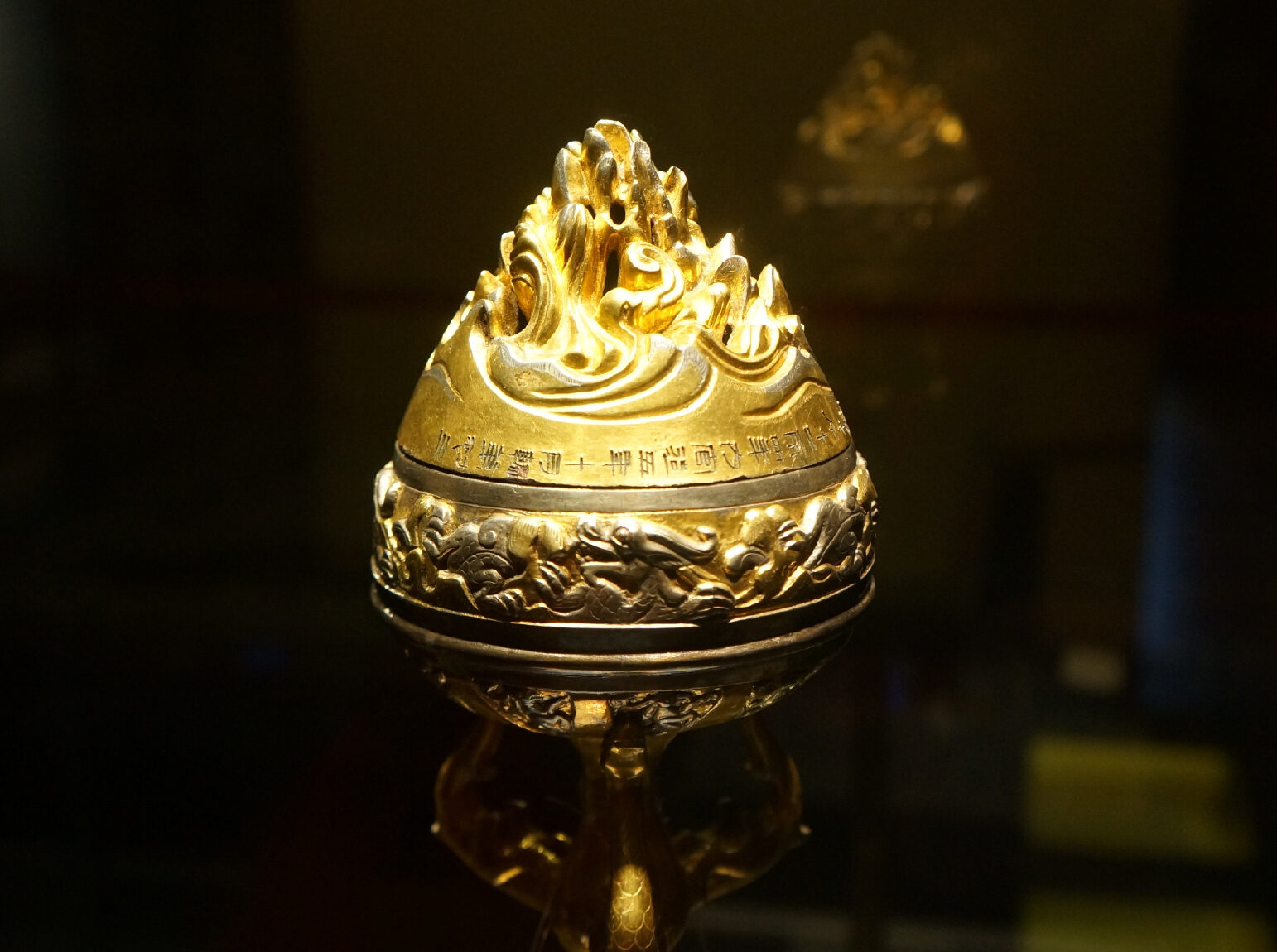- Home
- Tour Packages
- Destination
- About Us
- Contact
- Reviews
- Travel Guide
-
-
- Must-Go Destination Travel Guides
- Yunnan
- Guizhou
- Pingyao
- Hangzhou
- Guangzhou
- Guilin
- Chongqing
- Datong
- Huangshan
- Xiamen
-
-
-
- Customize Your Trip
Email:[email protected]
Email:[email protected]
Just China Tours, Just For You!
Shaanxi History Museum: A Window into China's Ancient Past
- Home
- Shaanxi History Museum: A Window into China’s Ancient Past
The Shaanxi History Museum stands as a treasure trove of Chinese civilization, offering visitors an unparalleled glimpse into the rich cultural heritage of one of China's most historically significant provinces. Located in Xi'an, the ancient capital of 13 dynasties, this museum houses over 370,000 precious artifacts that span more than a million years of history. From prehistoric relics to Tang Dynasty treasures, the museum provides a comprehensive and captivating journey through China's past, making it an essential stop for history enthusiasts and curious travelers alike.

Entrance of Shaanxi History Museum
When Shaanxi History Museum Opened
The Shaanxi History Museum was conceived in 1944 but only opened its doors to the public in 1991. It was China's first large-scale, modern national museum. The museum's collection has been amassed through archaeological excavations, donations, and transfers from other institutions. Its establishment marked a significant step in China's efforts to preserve and showcase its cultural heritage.
Layout and Construction
The museum complex covers an area of 65,000 square meters (16 acres), with 55,600 square meters of building space. The exhibition area spans 11,000 square meters.The main building features a grand, two-story central hall surrounded by four corner pavilions, mimicking traditional Tang Dynasty palace architecture. This creates a symmetrical layout with a clear hierarchy between the main and subordinate structures.The exterior is predominantly white, grey and black, giving the museum a solemn and dignified appearance. The roofs feature dark green glazed tiles and gold-plated decorations, further evoking Tang Dynasty aesthetics.Inside, the museum is divided into three main exhibition halls arranged chronologically:
- First floor: Prehistoric to Early Imperial China
- Second floor: Han to Tang Dynasties
- Underground floor: Special exhibitions
There are also dedicated spaces for artifact storage, research, and conservation.
Tour Information
Address: No. 91 Xiaozhai East Road, Yanta District, Xi'an, Shaanxi Province, China
Opening Times:
- Peak Season (March 15 - November 14)
8:30 AM - 6:00 PM (last entry at 4:30 PM) - Off-Season (November 15 - March 14)
9:00 AM - 5:30 PM (last entry at 4:00 PM)
Closed on Mondays, except for national holidays
Ticket Price:
Basic Exhibition Halls (1-3): Free (reservation required)
Treasures of Great Tang Dynasty Exhibition: 30 CNY
Tang Dynasty Mural Paintings Gallery: 300 CNY
Note: Free tickets are limited and often run out quickly. It's advisable to book in advance (reservation can be made three days in advance) or consider purchasing the paid exhibition tickets to ensure entry. In addition, Spring Festival bookings can be made 15 days in advance (e.g. January 27, 2024 tickets can be booked on February 10, the first day of the New Year).
Reservation Method
Please follow the "Shaanxi History Museum" wechat public account to make a real-name ticket reservation. Tickets will be released at 10:00, 11:00, 18:00, 19:00 every day. Please make an appointment on demand.
- Adult reservation with my second-generation ID card according to the reservation system prompts to make a reservation, each ID number is limited to 1 ticket per day, each account is limited to 5 tickets per day, and can only submit one order (if you need to add more than one visitor, please submit it in the same order at one time). Please fill in the identity information carefully, select the date of visit, visit time, number of tickets, and confirmation information, and confirm the submission of the order. Reservation tickets are valid for the first time on the same day.
- Children under 1.4 meters or under 6 years old: no reservation is required and no identification is required. An adult with a reservation can bring up to 2 children to the library.
What to See in Shaanxi History Museum
The Shaanxi History Museum, located in Xi'an, offers a comprehensive journey through Chinese history, with a particular focus on the Shaanxi region. The museum's exhibits are organized chronologically across three main exhibition halls, each showcasing different periods of China's rich past.
- First Exhibition Hall
Located on the first floor, this hall covers the earliest periods of Chinese civilization, from prehistoric times (1,150,000 years ago) through the Western Zhou (1046-771 BC) and Qin (221-206 BC) dynasties.
- Fossils and stone tools of the Lantian Man, an early human ancestor predating the Peking Man
- Neolithic artifacts from the Banpo culture, including pottery and tools
- Bronze vessels from the Shang and Zhou dynasties, showcasing advanced metalworking techniques
- Terracotta warriors and horses from Emperor Qin Shi Huang's mausoleum, offering a glimpse of the famous Terracotta Army
- The "Deer Pattern Eaves Tile" from the Qin dynasty, a unique architectural element
This hall provides visitors with a foundation in early Chinese history and the technological advancements of ancient civilizations in the region.

Lantian People
- Second Exhibition Hall
Located on the second floor, this hall focuses on the Han Dynasty (202 BC - 220 AD) through the Northern and Southern Dynasties (420-589 AD).
- Gold and silver wares from the Han Dynasty, demonstrating the prosperity of the period
- Pottery figurines depicting daily life, religious beliefs, and military aspects of Han society
- The famous "Empress's Seal", a jade seal from the Western Han dynasty, one of the most significant imperial seals ever discovered in China
- Artifacts showcasing the cultural exchanges along the Silk Road during the Han Dynasty
- Exhibits illustrating the period of disunity and cultural integration during the Northern and Southern Dynasties
This hall highlights the cultural and technological achievements of the Han Dynasty, often considered China's golden age, and the subsequent periods of change and adaptation.

Gilt bamboo incense burner
- Third Exhibition Hall
Also on the second floor, this hall is dedicated to the Tang Dynasty (618-907 AD) and subsequent periods up to 1840 AD. The Tang Dynasty, with its capital in Xi'an (then Chang'an), represents another pinnacle of Chinese civilization.
- Exquisite gold and silver objects from the Tang Dynasty, including items from the famous Hejia Village hoard
- Tri-color glazed pottery (sancai), a hallmark of Tang craftsmanship
- Mural paintings from Tang Dynasty tombs, offering insights into the life and beliefs of the period
- The "Four Footed Li", a bronze cooking utensil from the earlier Shang dynasty
- Artifacts demonstrating the cosmopolitan nature of the Tang capital and its far-reaching international connections
This hall showcases the artistic and cultural zenith of Chinese civilization during the Tang Dynasty and traces the continued importance of the region in subsequent periods.

Tri-colored Horse
- Special Exhibition Halls
In addition to the three main exhibition halls, the museum offers special exhibitions that provide more in-depth looks at specific aspects of Chinese history and culture.
Treasures of the Great Tang Dynasty Exhibition:
This paid exhibition showcases some of the most valuable and significant artifacts from the Tang period, including rare gold and silver wares, jade items, and other precious objects that demonstrate the wealth and artistic achievements of the dynasty.
Tang Dynasty Mural Paintings Gallery:
This special gallery, which requires an additional ticket, houses an impressive collection of mural paintings from Tang Dynasty tombs. These murals offer unparalleled insights into the daily life, beliefs, and artistic styles of the Tang era, covering subjects from everyday scenes to mythological themes.
The Shaanxi History Museum's layout and curation allow visitors to trace the development of Chinese civilization chronologically, with a particular emphasis on the periods when Xi'an (formerly Chang'an) served as the capital of China. The museum's vast collection, numbering over 370,000 items, ensures that each visit can offer new insights and discoveries.
The museum's architecture itself is noteworthy, designed to evoke the style of the Tang Dynasty with its symmetrical layout, central hall, and corner pavilions. This architectural choice creates an immersive historical atmosphere that complements the exhibits within.
For visitors, the Shaanxi History Museum offers a unique opportunity to witness the breadth and depth of Chinese history through carefully selected artifacts and informative displays. From prehistoric stone tools to exquisite Tang Dynasty gold work, the museum presents a comprehensive view of China's technological, artistic, and cultural development over millennia, with a special focus on the contributions and significance of the Shaanxi region to Chinese civilization as a whole.
Visiting Route through Shaanxi History Museum
A typical route through the museum includes:
- Ground Floor: Prehistoric to Early Imperial China (Hall 1)
- Second Floor: Han to Tang Dynasties (Halls 2 and 3)
- Underground Floor: Special exhibitions (paid entry)
Allow 2-3 hours for a comprehensive visit.
How to get to the Shaanxi History Museum?
- By Coach
From the airport, take the airport coach to Shaanxi History Museum Line
- By Metro
Line 2 or 3 to Xiaozhai Station, Exit D. Walk east for about 800 meters.
Line 3 or 4 to Dayanta Station (Big Wild Goose Pagoda), Exit A. Walk west for about 800 meters.
- By Bus
Take bus 5, 19, 24, 26, 27, 30, 34, 271, 400, 401, 521, 527, 701, 713, or Tourist Bus 8 (610) to the Shaanxi History Museum stop.
Travel Tips
- Book in advance: Reserve your free tickets online through the official website or WeChat mini-program to avoid disappointment.
- Arrive early: Free tickets are distributed at 8:30 AM and 1:00 PM and often run out quickly.
- Consider paid exhibitions: If free tickets are unavailable, the paid exhibitions are worth the price and often less crowded.
- Bring ID: Your passport is required for both reservation and entry.
- Use an audio guide or hire a tour guide: Many exhibits lack detailed English explanations, so additional interpretation can greatly enhance your visit.
- Plan for security checks: Bags must be left in lockers, so bring only essentials.
- Photography restrictions: Flash photography is not allowed, and some exhibits prohibit photography entirely.
- Visit on weekdays: Weekends and holidays can be extremely crowded.
- Combine with nearby attractions: The museum's location makes it easy to pair with a visit to the Big Wild Goose Pagoda or other nearby sites.
- Wear comfortable shoes: The museum is large, and you'll be on your feet for several hours.
- Bring water: The museum can get warm, especially when crowded.
- Check for special exhibitions: Temporary exhibits often showcase rare artifacts not usually on display.
- Allow enough time: A thorough visit can take 3-4 hours, so plan accordingly.
- Use the official website: For the most up-to-date information on exhibitions and opening hours.
- Respect the artifacts: Many items are thousands of years old and irreplaceable. Follow all museum rules and staff instructions.





